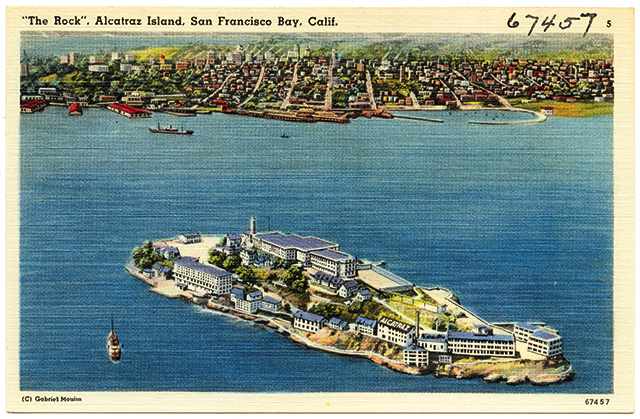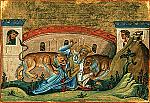Captive Faith, Did You Know?
From Joseph to John to Jesus
Many people in the Bible spent significant time in prison. The biblical record speaks of both their painful imprisonments and their ultimate trust in God. Examples include
• Joseph (Genesis 39–41) was put in prison for the false charge of assaulting Potiphar’s wife.
• Samson (Judges 16) was imprisoned by the Philistines for his activities against them.
• King Manasseh of Judah (2 Chronicles 33) was held captive by the Assyrians, an experience that led him to repent his previous policies.
• Jeremiah (Jeremiah 37–38) was put away as a political prisoner.
• King Jehoiachin of Judah (2 Kings 24–25, Jeremiah 52) was dethroned and put in prison by the king of Babylon but eventually released.
• John the Baptist (Mark 6), was imprisoned for speaking against King Herod and eventually beheaded.
• Peter (Acts 12) was imprisoned during a persecution of the church by King Herod and released by an angel.
• Paul (Acts 16, 22–28) was put into prison several times on accusations of blasphemy and disturbing the peace, and eventually beheaded.
And, of course, Jesus himself was arrested, imprisoned, and executed, as all four Gospels tell us. 1 Peter 3:19–21 makes a brief reference to Jesus’ “preaching to the spirits in prison” in the underworld between his death and Resurrection. Eastern Christian icons often show Jesus at his Resurrection leading all of humanity out of prison, beginning with Adam and Eve.

[Alcatraz’s now-closed prison. Wikimedia.]
Prison firsts and facts
• The first document to state that no one can be imprisoned without trial by a jury of his or her peers was the Magna Carta in 1215.
• While upper-class and political prisoners were often imprisoned for long periods of time, common criminals were usually sentenced (or released) on the spot. The only exception to this was imprisonment for debt, though locking poor people up pretty much guaranteed they would never be able to pay. The United States had debtors’ prisons until the 1830s.
• Beginning in the 1500s, criminals were sometimes sent to workhouses if convicted of “leading a Roguish or Vagabond’s Trade of Life.” In 1516 Thomas More’s Utopia was the first written recommendation of prison as a means of punishment for the average criminal as opposed to common alternatives—death, fines, public shame, and beatings. By 1680 Quakers were advocating the prison system as an alternative to the death penalty.
• You may remember the “A” for “adulterer” that Hester Prynne wears in A Scarlet Letter. Other letters used in public shaming of criminals included “B” (blasphemer), “D” (drunk), “F” (fighter), “M” (manslaughterer), “R” (rogue), and “T” (thief).
• The modern penitentiary is based in large part on theories put forth in Cesare Beccaria’s Of Crimes and Punishment (1764). “Penitentiary” comes from the same root as the word penance: it was meant to reform criminals by giving them an opportunity to repent their crimes.
• Until the rise of state prisons in the nineteenth century, prisoners had to pay for (or bribe their guards for) bedding, food, and fuel to warm their rooms.
Bringing light into dark places
• England’s first prison reformer was government official and philanthropist John Howard (1726–1790), who was briefly imprisoned himself for political reasons. He wrote in 1777, “No Prisoner should be subject to any demand of Fees. The Gaoler [jailer] should have a salary in lieu of them; and so should the Turnkeys [guards].”
• Several signers of the US Declaration of Independence, including Thomas Jefferson (1743–1826) and Benjamin Rush (1746–1813), advanced prison reform in the United States.
• Jailers begged Quaker Elizabeth Fry (1780–1845; see CH 117) not to enter the women’s prison ward, for fear that she would be attacked. But Fry went anyway, saying, “I am come to serve you, if you will allow me.” Her calming presence and attention to their physical needs allowed her to share Scripture and prayer, bringing many women to their knees.
Order Christian History #123: Captive Faith: Prison as Parish in print.
Subscribe now to get future print issues in your mailbox (donation requested but not required).
A PRAYER FOR PRISONERS
“Lord Jesus, for our sake you were condemned as a criminal: Visit our jails and prisons with your pity and judgment. Remember all prisoners, and bring the guilty to repentance and amendment of life according to your will, and give them hope for their future. When any are held unjustly, bring them release; forgive us, and teach us to improve our justice. Remember those who work in these institutions; keep them humane and compassionate; and save them from becoming brutal or callous. And since what we do for those in prison, O Lord, we do for you, constrain us to improve their lot. All this we ask for your mercy’s sake. Amen.”
—Book of Common Prayer (1979) CH
This article is from Christian History magazine #123 Captive Faith. Read it in context here!
By the editors
[Christian History originally published this article in Christian History Issue #123 in 2017]
Next articles
Editor's note: Captive faith
In 2008, our founder Dr. Ken Curtis (1939–2011) wrote this introduction for prison testimonies throughout church history.
Ken CurtisPrison as a parish: Christian inmates
Christians in prison have shared similar stories through 2,000 years.
Roy Stults and Jennifer Woodruff Tait“I am hoping God will answer your prayers”
The first letters we have from an imprisoned Christian are from the apostle Paul.
Apostle PaulSupport us
Christian History Institute (CHI) is a non-profit Pennsylvania corporation founded in 1982. Your donations support the continuation of this ministry
Donate






